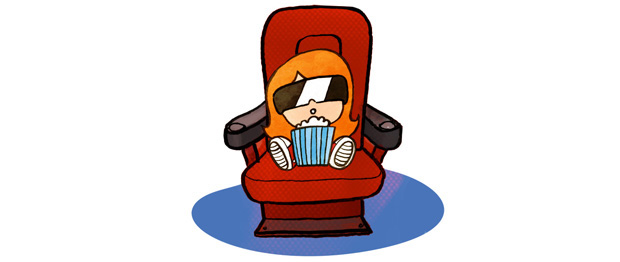by Aimee Weinstein
Across the globe, parents go to great lengths to make sure that their children are safe and protected from harm. Daily, children are exposed to sounds and images from the media, some of which are appropriate and some of which are not. Movies in the cinema are no exception. Parents face tough choices regarding what they allow their children to see in the theater, but luckily, if parents are willing to do a little research, guidance is available.
The Classification and Ratings Administration (CARA), which was founded in 1968 as a body independent of the Motion Picture Association of America (MPAA), gives movies those ratings with which everyone is so familiar. CARA, which is comprised of a group of parents who form a board to review the movies, views itself as a guideline for parents, who still have the job of deciding which films are appropriate based on their individual values and the varying personalities of their children. The board, made up of eight to thirteen members, reviews the movies, and then members vote on which rating to give the film. The studios fund the reviewing by paying to have their films reviewed, and therefore accessible to the public. It all works in concert: the studio makes the movie; the studio, which may or may not be a member of the MPAA, submits the movie for review; the CARA reviews it; and then it is up to the National Association of Theater Owners (NATO) to enforce the rating by checking identification of younger views who buy tickets without an adult present.
CARA’s website, www.filmratings.com, notes that the rating system was never meant to replace a parent’s guidance. In addition, the fact that the position on the CARA board requires members to be parents themselves, ensures that the board decisions are representative of the majority viewpoint of American parents, as well as having the ability to evolve as society’s values evolve and change. One example of the way ratings evolve is the way films deal with smoking. At one point, smoking was not a big deal in a movie, but as the health risks of the habit have become more apparent, some films might get stronger ratings based on the glamorization of cigarettes. Scenes of partial nudity or strong language have become more acceptable as American society becomes more tolerant of these things, so the ratings of films depicting these things are looser.
Of course these issues still pose strong problems for parents. A film might have a rating of PG, but there still may be more violent scenes or scenes with sexual content than parents would prefer. And that’s where the important research takes place. The official ratings only go so far, even with the addition of further descriptors below the simple rating that CARA added in 1994. In the age of the Internet, there are resources. A favorite among parents is www.commonsensemedia.org, which rates not only movies, but games, applications, books, and television shows as well. Each media reviewed contains detailed descriptions of the scenes that contain potentially objectionable content, and is given a more specific age recommendation along with warnings and advice from various parents as well as official reviewers. Another such website is www.kids-in-mind.com, which gives very specific scene-by-scene information on things about which parents should be aware when making decisions.
Parents still have difficult choices to make based on their value systems. For example, some parents feel that they can explain a sex scene to their ten-year-old, and might seek an opportunity to show right and wrong in the relationships between people, but to other parents, that is abhorrent. Other parents do not want their children to see scenes in which bombs explode or people go to war because they find it inexplicable, and do not want their children desensitized to violence, which is prevalent today. Different parents have different levels of tolerance.
What is the relevance for parents living outside of the United States, though? Luckily, the US system of ratings has become common across the globe, so that theaters in Tokyo display the same ratings for films that theaters in the US would show. Parents can go to the MPAA website to see what the ratings are and what they mean, for any film. Even films produced outside the US by foreign filmmakers can submit their films to CARA for rating, and it behooves them to do so since the ratings have become familiar everywhere.
With the availability of information today, parents have more and more of a responsibility to research what their children are watching. Luckily there are resources available to assist parents in this daunting task, and the work that parents do now will pay off in the long run as they see their children growing into responsible adults.
Parenting Tips:
There are many places that parents can look in order to research information on which films are appropriate for their particular family and specific child. These are only a few of my favorites.
The Motion Picture Association of America contains a description of what each rating means: www.mpaa.org
The CARA website gives a good history of the rating system: www.filmratings.com/filmRatings_Cara
A great resource for parents that contains detailed information and ratings of various media: www.commonsensemedia.org
Another resource for parents that gives detailed movie descriptions and ratings: www.kids-in-mind.com
And still another resource for parents with a good blog attached to it: www.parentpreviews.com









